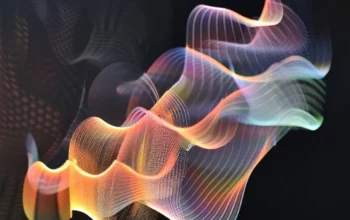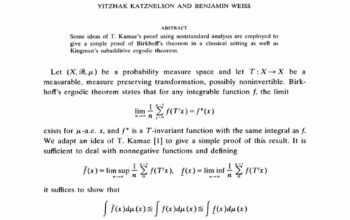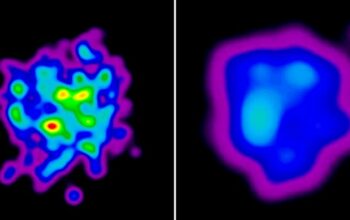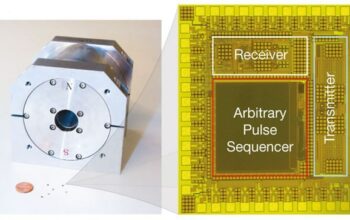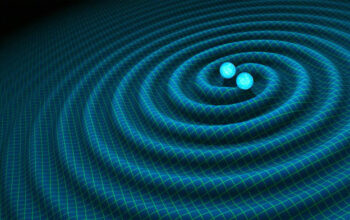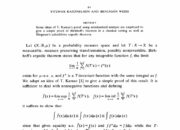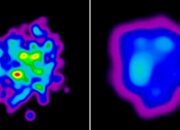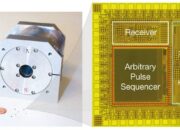Quantum computing represents a paradigmatic shift in information processing, inviting inquiry from physicists and engineers alike. Central to its efficacy are qubits, the fundamental units of quantum information. Unlike classical bits, qubits exhibit superposition and entanglement, properties that enable quantum computers to solve certain problems exponentially faster than their classical counterparts. However, to harness these capabilities, one must contend with unusual thermodynamic principles, particularly in relation to the cooling of qubits to maintain their quantum state.
The primary challenge of quantum computing lies in the maintenance of coherence among qubits. Quantum coherence is sensitive to environmental disturbances, including thermal noise. As temperature rises, the lattice vibrations and electromagnetic fluctuations in materials intensify, elevating the likelihood of decoherence that disrupts the delicate state of qubits. Consequently, it becomes essential to operate these devices at cryogenic temperatures, often close to absolute zero. This cooling effectively reduces the vibrational energy of the system, enabling longer coherence times—a measure of the duration a qubit can retain its quantum state before collapsing into a definitive state.
The thermodynamic processes involved in qubit cooling present a fascinating interplay between quantum mechanics and classical thermodynamics. In classical systems, cooling can be efficiently described using established principles, wherein energy is removed from the system to place it in a lower energy state. However, quantum thermodynamics introduces elements of complexity that extend beyond classical analogy.
One key aspect is the concept of Landauer’s principle, which posits a limit to the minimum amount of energy required to erase information from a system. In quantum computing, this is particularly consequential. When a qubit’s state is reset or combined through quantum gates, energy must be meticulously managed to prevent decoherence. The act of erasing quantum information necessitates a careful examination of the quantum state, as it directly influences the energy landscape of the qubit’s environment.
Furthermore, moving beyond mere theoretical musings, researchers examine phenomena such as the quantum Zeno effect and its implications for data cooling. The quantum Zeno effect elucidates the counterintuitive nature of quantum systems where frequent observation can freeze the dynamics of the system. This process can have parallels in stabilizing qubit states during cooling; frequent monitoring can impede thermal fluctuations that lead to decoherence. Herein lies the conundrum: the energy costs associated with observation may inadvertently complicate efforts to cool qubits effectively.
Another intriguing thermodynamic consideration pertains to the manipulation of quantum states through error correction codes. Quantum error correction seeks to preserve the fragile nature of qubits by encoding information across multiple qubits in such a way that, even if some qubit states are lost, the overall quantum coherence remains intact. This necessitates dynamic data movement and transformation, requiring additional energy input. The interplay between error correction, coherence maintenance, and cooling mechanisms thus epitomizes the nuanced balance between energy expenditure and computational fidelity in quantum systems.
Exploring the intricate thermodynamics of quantum computing also brings into question the very foundation of classical thermodynamic principles. The second law of thermodynamics, which states that entropy in an isolated system tends to increase, encounters unique challenges within the quantum realm. Qubits, by virtue of their quantum properties, experience fluctuating entropic states. This leads to provocative inquiries regarding whether quantum systems could operate in ways that seem to contravene established thermodynamic tenets. Research delves into whether the laws governing quantum entanglement could permit forms of order that might permit localized decreases in entropy, suggesting a potential duality between thermodynamic regulation and quantum information processing.
Indeed, this duality propels ongoing fascination with quantum computing. The prospect of achieving coherent, scalable quantum architectures not only reveals potential computational enhancements but also invites philosophical dialogue regarding the nature of information, reality, and entropy. Each insight gained into the thermodynamic constraints and opportunities within these systems evokes broader implications for energy management in future quantum technologies, particularly as the demand for robust quantum computers surges.
Emerging synthetic materials, such as topological insulators and superconductors, are being identified for their exceptional thermal properties, presenting promising avenues for qubit implementation. These materials offer pathways to operate qubits at higher temperatures while preserving coherence—effectively bridging the gap between classical thermal management and quantum state fidelity. Momentum in research endeavors to understand and exploit these properties speaks to the interdisciplinary collaboration necessary in addressing the intricacies of quantum coolings, such as the implications on energy flow, thermal boundaries, and the quantum-to-classical transition.
In conclusion, the strange thermodynamics of quantum computing exemplify an evolving scientific frontier. The cooling of qubits intertwines physical theories and computational needs, raising critical questions about the nature of information, energy transactions, and state preservation. Each exploration into the quantum realm unveils both enigmas and breakthroughs, continually shaping our understanding of the profound interconnections between quantum physics and foundational thermodynamic principles. As researchers continue to unravel these complexities, the potential of quantum computing remains boundless, urging deeper inquiry into the symbiotic relations between qubit cooling, energy management, and the future trajectory of technology.

